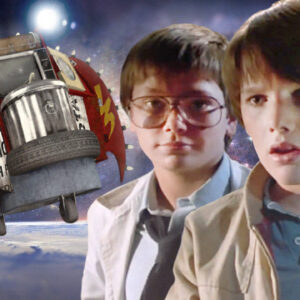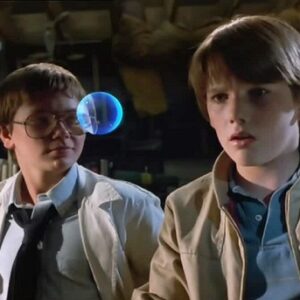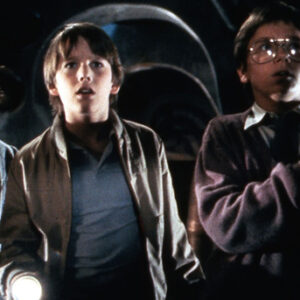Last Updated on July 31, 2021
Ink & Pixel is a source of pride and joy for me as a writer and as such, I’m always striving to take this column further for those who read and enjoy it. In an effort to widen the reach of our continuously growing fan-base, Ink & Pixel has broadened its horizons with the inclusion of films from the Horror, Sci-Fi, Action-Adventure, and Fantasy genres. Additionally, if you yourself, or anyone you know, helped to make any of the amazing feature films found within this column, I would love to talk to you to further my knowledge. Please contact me at [email protected] so we can discuss it further.

Holy hell! I hate to start this week’s column off with a bit of “weather talk”, but damn! It is so hot here in New York, right now! And it’s not that “Oh, how lovely, let’s go to the beach and frolic in the sand with a cold beer” kind of hot, either. No. It’s the type of hot where it feels as if someone drenched a facecloth in hot water and has thrown it over your face. So, in an effort to escape the wrath of our most precious but vindictive burning star, I locked myself inside of my apartment and cranked the AC! Then, with a chill in the air, I stripped down to nothing but my Donatello boxers and watched LOONEY TUNES: BACK IN ACTION.

Those of you who’ve been following this column for a while, or have perhaps read my review for the LEGENDS OF TOMORROW episode “Night of the Hawk”, already know that I’m a fan of director Joe Dante. Who’s that, you say? Well, first of all, shame on you! And second, he’s the director of such timeless classics like GREMLINS, THE HOWLING, and PIRANHA! Yeah, that guy! It doesn’t end there, either. He’s also been the talent behind the camera for INNERSPACE, EXPLORERS, and my personal favorite, THE ‘BURBS! If you ask me, I’d say that’s quite the cinematic resume! Clearly, Dante has an eye for comedy, creatures, and slapstick on the big screen. It’s no wonder that Warner Bros. tapped Dante, the man who revealed Gizmo’s infatuation with Stallone’s Rambo to bring their most popular animated characters back for another shot at the silver screen!

Do you know what I think is funny? There’s a portion of the world’s population who are die hard fans of the movie SPACE JAM. You know what I’m talking about, right? Michael Jordan, Moron Mountain, and Danny Devito as a cigar chomping martian with plans for world domination? Heh, how could anyone ever really forget SPACE JAM? Well, what would you say if I told you that LOONEY TUNES: BACK IN ACTION began as a direct sequel to Joe Pytka’s sports-oriented bit of cinematic shenanigans. In truth, Dante didn’t feel as if SPACE JAM captured the comedic essence of the Looney Tunes characters, and wanted to create a very different film indeed if he were to sign on. Thus, Joe and screenwriter Larry Doyle set out to make something quite the opposite of SPACE JAM, as they both failed to see the merit of a Bugs Bunny who spit gangsta rap lyrics or the inclusion of an over-sexualized female bunny in booty shorts.

Hey Steve, this is all very riveting stuff you’ve got here, but I’ve never seen LOONEY TUNES: BACK IN ACTION. What exactly is the plot of this movie? Ah ha! Allow me to enlighten you, then. First, the film is not a straight-up animated feature but rather a live-action/animation spy comedy which features many Looney Tunes characters acting alongside flesh and blood actors such as Brendan Fraser, Jenna Elfman, Steve Martin, Joan Cusack, Timothy Dalton, and Heather Locklear.

The film begins with Daffy Duck taking a stand against the Warner Bros. board of directors, by demanding that they grant him a starring role in his own cartoon series. Without hesitation, the studio boss, Kate Houghton (Elfman), fires Daffy on the spot. Shortly thereafter, a security guard/aspiring stuntman named DJ (Fraser) arrives to escort the megalomaniacal mallard off the premises. Never content to go quietly, Daffy leads him on a merry chase around the studio lot. Before long, the frantic pair accidentally cause the Batmobile to collide with the famous Warner Bros. water tower. After the disaster, Kate fires DJ as well, not knowing that he’s the son of the studio’s biggest star (and top secret super spy) – Damien Drake (Dalton).

After losing his job, DJ returns home with an outraged and clingy Daffy in tow. While debating his next move, DJ stumbles upon a live feed of his father involved in a James Bond-like brawl. In between the punching and kicking, Damien tells his son of a dastardly plot being hatched by one of the ACME company’s head honchos, Mr. Chairman (Martin). Perhaps it’s because his suit is too tight, and not enough blood is making its way to his brain, but Mr. Chairman plans to use a mystical diamond called “The Blue Monkey” to turn the world’s population into simple-minded chimpanzees. Thankfully, Kate and Bugs catch up to DJ and Daffy, and together, they’ll use every trick in the Looney Tunes book to put a stop to Mr. Chairman’s hilarious and ridiculous scheme.

I remark about this every now again, but it’s something that I feel bears repeating. One of my favorite perks to writing this column is that I get to learn about and share my knowledge of the process of creating movie magic. Sometimes writing about the methodology of executing effects can become redundant. Though typically, once a believable and cost-effective manner of manufacturing an effect has been found, it can become an industry standard until such a time when it might be improved upon by a savvy technician. In regard to LOONEY TUNES: BACK IN ACTION, many of the sets were made using a foam rubber compound. For example, when DJ, Daffy and the rest of the gang arrive at the “Monkey Island” locale (near the climax of the film), every wall, statue and simian-shaped obelisk you see has been carved and shaped out of the safe, spongy material.

In terms of inserting the animated characters into the live-action film, there were three distinct steps that the studio had to take before completing any scene that featured one of Warner Bros. famous toons. First, the camera operators would film the scene using only the human actors in the shot. Next, the team does another take, only this time the animated characters are represented by size-appropriate puppets. Operated by puppeteer Bruce Lanoil, the stand-in dolls then serve as a point of reference for all involved. Finally, the puppets are then removed and the scene is captured once more, this time with a dialogue track playing off-camera. When all is said and done, the result is hopefully a believable marriage of live-action and animation coexisting with one another in the same theatrical space.

After the scenes are completed, the animators and effects engineers take the “character absent” scenes and begin to draw over them. First, a rough series of black and white “pose positions” of the toon interacting with the human actor is applied to the footage. That series of animations are then cleaned up, colored, and highlighted to achieve the desired effect. In some cases, stand-in actors dressed in green screen-reactive body suits are used to serve as a visual aid for the actors as they are essentially participating in a scene that stars them, and their overactive imaginations.

After those iconic red rings appeared on screen, and Porky Pig declares “That’s All Folks!”, LOONEY TUNES: BACK IN ACTION retired from its theatrical run with a worldwide total of $68,514,844 in box office receipts. Unfortunately, when stacked against the film’s $80 million dollar production budget, hopes of the film re-invigorating the Looney Tunes brand were more or less dashed. As of the writing of this article, the film holds a middle-of-the-road 57% fresh rating on Rotten Tomatoes – but I think it’s important to always remember that seeing the film for yourself is the only way to truly judge whether or not it’s something you’ll enjoy. Unfortunately, BACK IN ACTION failed to re-launch the careers of Bugs, Daffy, and the rest of their Merry Melodies pals. And honestly, if Warner Bros. thought Loonatics Unleashed was going to be the answer to all of their wascally woes, I think they might have taken a wrong turn at Albuquerque.

As for me, I have a lot of mixed feelings about LOONEY TUNES: BACK IN ACTION. While I appreciate seeing some of my favorite animated personalities of all time starring in a long-overdue feature film, I’m not certain that the end result worked best for either the Looney Tunes brand or the comedic sensibilities of the characters. That said, I’d like to offer you an alternative perspective from someone who thoroughly enjoys this movie, and whom I greatly respect. It’s my pleasure to introduce to you Senior Editor of Talking Comics, film aficionado, and Joe Dante super fan, Mr. Bob Reyer.

“As a big fan of both classic Looney Tunes and director Joe Dante, I’m more-than-a-bit biased, but for my money, having the director of “live-action cartoons” such as “Gremlins” and “Explorers” tackle Bugs Bunny & Daffy Duck was a marriage made in movie heaven! Mr. Dante captured the anarchic spirit of the best Warner’s cartoons, keeping all the characters on-model (sometimes over the objections of know-nothing studio executives!), with just enough of a plot to keep things moving forward, but not too much that it would be a drag on the comedy, which was delivered nimbly by the human cast as well as the toons.

Furthermore, how can one think ill of a film that honours so much of what came before through the usage of winks, nods, homages, and cameos in the “chicken fat” style of Bill Elder’s MAD comic book artwork, where every panel required a second or sometimes third look to catch all the jokes, F’rinstance, Brendan Fraser’s character D.J. has a “spy car” that’s an AMC Gremlin (in-joke #1) and when he gets in it, Jerry Goldsmith’s “Gremlin Rag” begins to play (#2), the engine noise is by the late Mel Blanc, (Looney Tunes’ “Man of a Thousand Voices”) (#3), and the sound effects are what he used when voicing Jack Benny’s Maxwell automobile from Mr. Benny’s radio show of the Thirties and Forties (#4)! (As an aside, I noted over a full hand-written page of similar chicken fat!)

Joe Dante’s first “appearance” was as a teenager writing articles for the “monster mags” of the Sixties, so it’s not surprising that during the “Area 52” sequence. this hidden base counts among its inhabitants Robby the Robot from “Forbidden Planet”, Ro-Man from “Robot Monster”, the “Man from Planet X”, the menacing plant from “Day of the Triffids”, the brain creatures from “Fiend Without a Face”, a Metalunan mut-ant from “This Island Earth”, some Whovian Daleks, and also Kevin McCarthy as Dr. Miles Bennell still trying to warn us about the “Invasion of the Body Snatchers”…and in Black & White, no less!

Does this film have flaws? Sure, but it is such a love letter to the history of “Termite Terrace” (the Warner Brothers Animation Department), and to movies in general, that for me at least, its good intentions render it far more enjoyable than the over-calculated (though uber-popular) “Space Jam”. Here’s hoping that Mr. Seigh’s column will rekindle interest in what I feel is a film that deserves a re-assessment, and particularly one grounded in the same cinematic history that this movie celebrates.”
Why thank you, Mr. Reyer, you’re too kind. And thank you all for stopping by and joining me on this look back at an interesting milestone in the Looney Tunes major motion picture history. And with that, I suppose there’s only one thing left to say …





















Follow the JOBLO MOVIE NETWORK
Follow us on YOUTUBE
Follow ARROW IN THE HEAD
Follow AITH on YOUTUBE